The dominance of Realme and Xiaomi in the budget and affordable segments is being challenged by several brands, who are staking their claim in this hotly-contested arena. As such, there are bountiful of smartphones available to users in the budget category, including Motorola’s G-series of handsets which have been the go-to for price-conscious buyers for years. The Moto G9 Power, for instance, starts at Rs 11,999 and is in direct competition with the Redmi Note 9 (review), Realme Narzo 20 (review), and more. On paper, the G9 Power does have a few things going for it, including but not limited to its massive 6,000mAh battery, a huge 6.8-inch display, and a triple-camera setup that includes a 64MP sensor. Furthermore, much like other devices from the company’s stables, the Moto G9 Power also offers a clean software experience. Clearly, the Moto G9 Power comes across as an interesting proposition, so in this review, let’s find out how it fares.
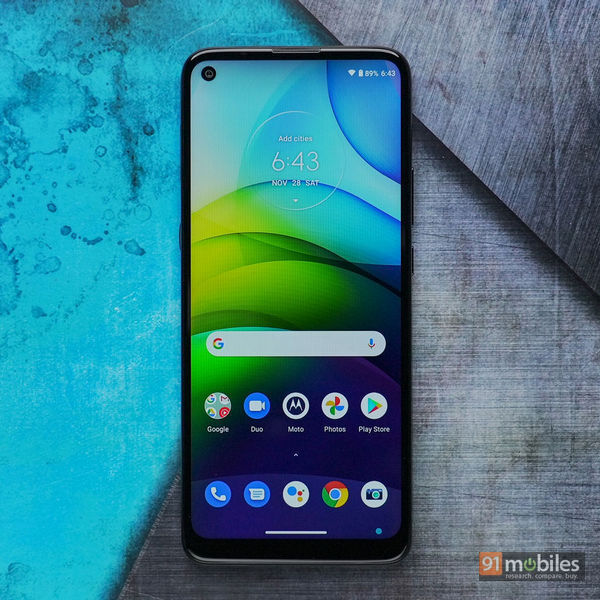
Verdict
The Moto G9 Power is let down by below-average performance and a bland, heavy design. It packs in a huge display at 6.8-inches but lacks FHD resolution. Saving the phone are its giant 6,000mAh battery and a stock Android approach. The POCO M2 Pro, selling at Rs 11,999, is a better choice in many regards unless you prefer Moto’s clean software and its bigger battery capacity.
The lowdown
The Moto G9 Power is an absolute tank of a unit and the handset features an extremely rigid chassis that’s void of any flex. The phone is also quite thick at 9.6mm and weighs a good chunk too at 221g, which can be accredited to the unit’s massive 6,000mAh battery. That said, despite its rather large frame, the front of the device isn’t all screen as the panel is surrounded by wide bezels and a prominent chin. What’s more, affecting the phone’s screen real estate is its selfie shooter, which is present inside a sizeable punch-hole cutout positioned towards the top-left of the panel.
As prefaced previously, the Moto G9 Power has been constructed using plastic and the phone features a carbon-fibre like texture on the back which feels slightly rough to the touch. Thankfully, despite its big size, the G9 Power’s chamfered edges and curvy back help when one is holding the phone. That said, don’t let the device’s generous grip fool you into thinking it’s ideal for one-handed usage. As for the rest of the design elements, the back of the Moto G9 Power features a triple-camera and flash module enveloped in a square housing along with a fingerprint sensor, housed inside the Motorola dimple. The power button, which can be found on the phone’s left-hand spine, has a textured feel to it, differentiating it from the dedicated Google Assistant button while the volume rockers keys are on the right. All the buttons feel quite tactile and clicky. The bottom of the device consists of the Type-C port and the speaker grille while the 3.5 mm headphone jack is placed on the top.
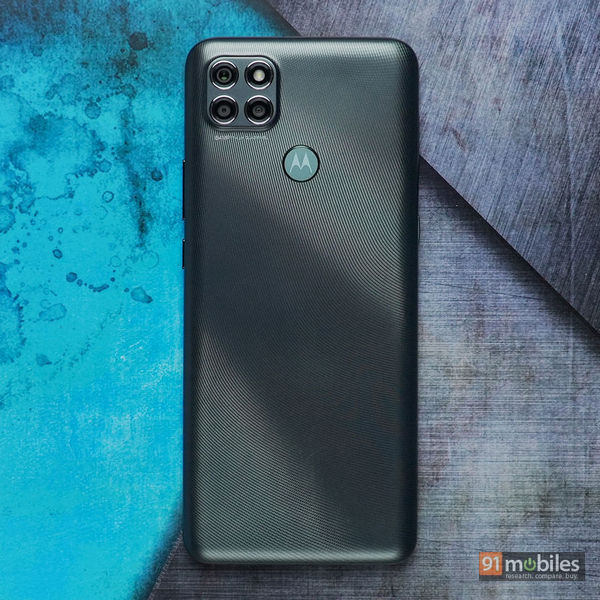
Coming to the display, the phone’s prominent 6.8-inch panel is hard to miss, even from a distance. The display in question is an IPS LCD screen with HD+ (720 x 1,640) resolution and a 20.5:9 aspect ratio. The panel ships with a punch hole which has some backlight bleeding around it – a commonplace on budget LCD displays. Furthermore, the lack of WideVine L1 support on the device means buyers can only stream content in SD quality from OTT platforms like Netflix and Amazon Prime. That said, I was content with the vibrancy and colour accuracy of the display and its larger footprint also enhanced the viewing experience that much more. You also get a handful of customisation options to finetune your experience and can choose between Saturated, Boosted, and Natural colour profiles for the display, and even toggle Night Light for ease of use during the night. The refresh rate is locked at 60Hz, though that’s the case with most devices retailing in the same price bracket too. The panel does get quite bright for good legibility under the sun and the colour shift, when viewing content at an angle, isn’t a lot either. All things considered, the Moto G9 Power does have a nice display but the screen’s low resolution will leave many users wanting for more.
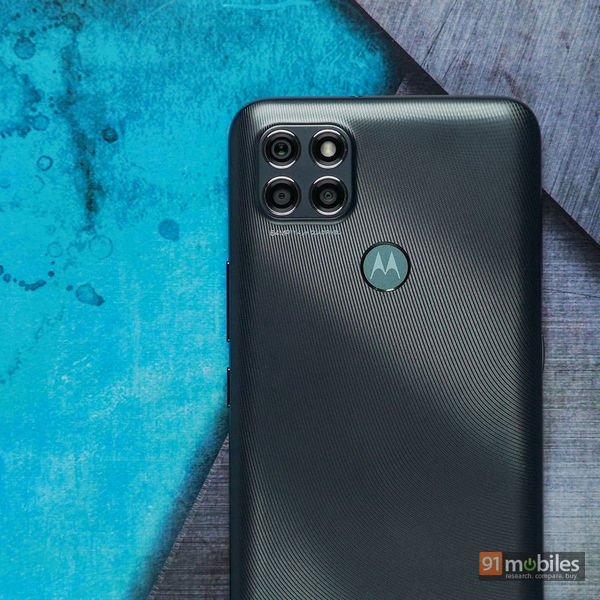
On the optics front the phone packs in a 64MP primary sensor which is supported by a 2MP depth camera and a 2MP macro camera. The primary lens uses pixel-binning technology to churn out detailed 16MP shots but can utilise the full 64MP resolution of the sensor using the Ultra-Res mode. For a budget phone, the G9 Power can take decent shots when there is a lot of natural light. The shots exhibit relatively dull colours but the sensor handles exposure clipping well. What’s more, for a budget phone, the Moto G9 Power boasts ample dynamic range in the compositions too. Unfortunately, while the camera can snap pictures quickly, the sensor does struggle to latch on to the focus from time to time.
Much to my dismay, night-time photography on the Moto G9 Power, even by budget phone standards, is not great. For one, focusing on a subject in dark takes a long time. Images are out of focus even when there is assistance from nearby street lighting. The dedicated Night Mode tends to overexpose shots, making a low light picture appear as though it was clicked under a bright sun. I hope that with time some new software updates will be able to fix this issue.

Other lenses on the phone include a 2MP depth sensor which works as advertised for portrait shots but sometimes the edge detection is faulty. Then there is the 2MP macro sensor, which I thought was just added for padding up the camera module but in the case of the G9 Power, it really does work well. The colours look decent, the subject gets in focus easily and the detailing in the shots looks quite good. However, like all macro shooters, you will require ample light to pull out usable shots. Then there is the selfie shooter on the front which has a resolution of 16MP. It clicks satisfactory photos with accurate skin tones, and facial features being oversharpened to a reasonable degree. The front portrait mode works well too, though again, there needs to be fairly good lighting for it to function adequately.
The device uses the 11nm Snapdragon 662 SoC for number crunching. Being on the lower end of Qulacomm’s mid-range processing spectrum, my expectations were not that great from the Moto G9 Power. The benchmarks paint a very similar picture with Geekbench 5 showing single-core and multi-core scores of 309 and 1,408 while Antutu gave an overall score of 169,608. Both of these are indicative of the Snapdragon 662’s limited computing capabilities. When compared to something like the POCO M2 Pro‘s (review) Snapdragon 720G which has an overall Antutu score of 276,927, the performance difference becomes more prominent. However, regular usage showed that the device was swift in opening apps and multitasking but was sluggish when too many heavy apps were running at once. I have the 4GB RAM + 64GB storage version which is the only version up for sale, but you do have the option to expand the storage by up to 512GB using an external microSD card. The chipset is also not made for heavy gaming with Call of Duty Mobile running properly only at Medium Graphics Quality and Frame rate set at High. Thankfully, the fingerprint and face authentication on the G9 Power was quite snappy. I faced no issues with microphone quality or with any network issue on Jio’s Noida telecom circle. As for audio, the single bottom-firing speaker lacks depth and it doesn’t get all that loud either, so you should stick to using wired or Bluetooth earphones with the handset.
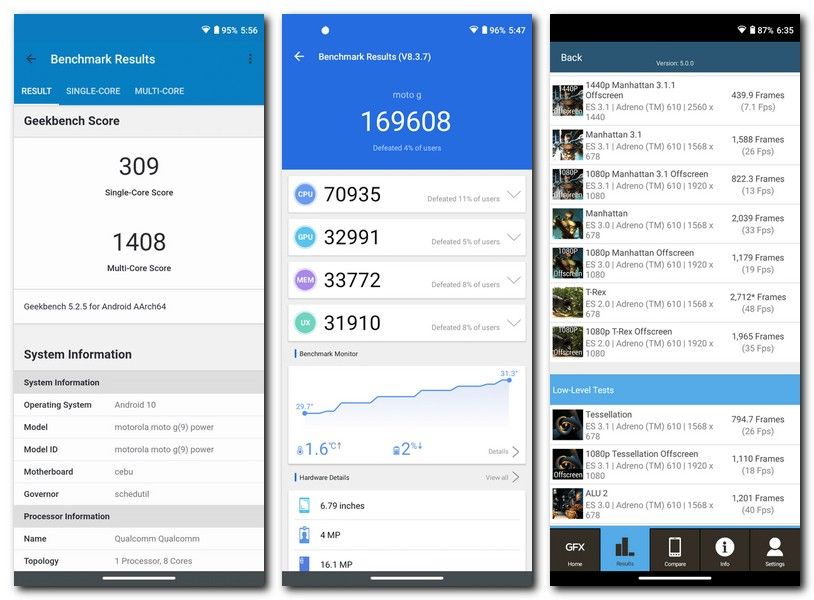
A big reason to go for the Moto G9 Power is definitely its near-stock Android build which offers a clean visual aesthetic. On the downside though, Motorola is shipping the phone with Android 10. I have written about the benefits of a stock Android UI in my Moto G 5G review.
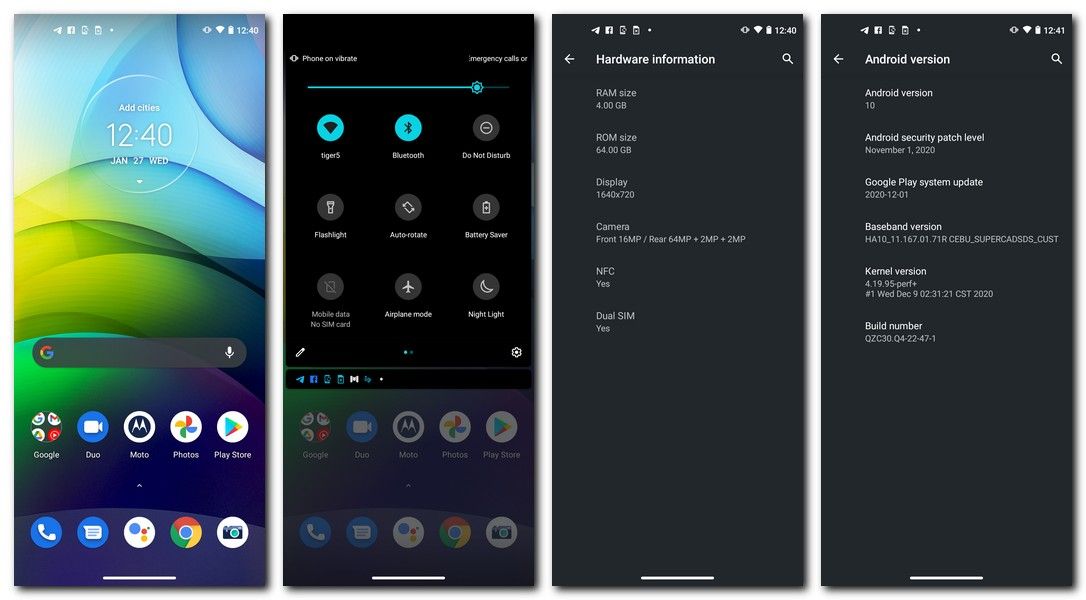
Battery-wise, the Moto G9 Power ships with a 6,000mAh cell which is very likely going to last nearly two days if the device is used judiciously. To be quite honest, even with moderate usage which includes streaming content on Netflix and about an hour of gaming, I was getting 7-8 hours of screen on time. Power management on the device is also optimum as the battery barely drops when the phone is left on standby. Battery life is aided by the chipset which isn’t resource-hungry, and the HD display with a standard refresh rate. Charging can be done via the 20W fast charger provided inside the box. It will take about 2 hours to completely charge up the battery but about 50 percent can be done in 45 minutes which I think is enough for one whole day of light usage.
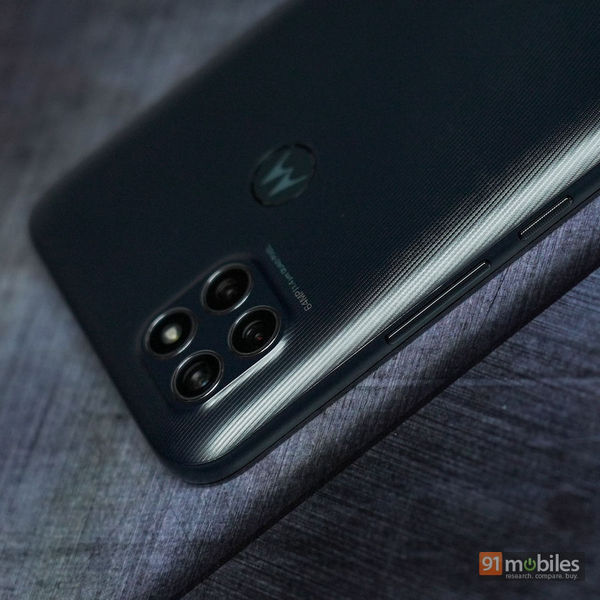
Final Verdict
The Moto G9 Power has to stand up to a lot of heat in the budget segment but has few features that boost its credibility. There is a big 6,000mAh battery which lasts a long time but apart from that, the phone does little to set itself apart from the herd of other compelling options. The large 6.8-inch display is affected by its low resolution and chunky bezels surrounding it. Not to mention, the Snapdragon 662 chipset powering the phone isn’t on par with the competition and struggles to handle graphics-heavy tasks. Apart from that, the phone is quite heavy and thick owing to its big battery, which makes it unwieldy for one-handed usage. The saving grace is the stock Android solution which keeps the interface free from unnecessary bloatware, baked in ads and heavy themes that slow the phone down. If you are a fan of the Motorola philosophy of clean software, don’t mind the heavy design and have moderate performance needs, you should go for the Moto G9 Power. For everyone else, the Redmi Note 9 or the Narzo 20 are better options.
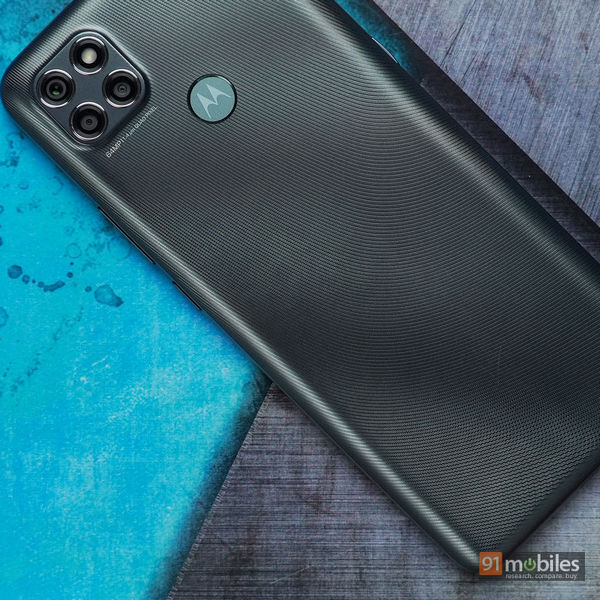
Editor’s rating: 3.5 / 5
Pros
- Solid battery life
- Clean software
- Huge display
Cons
- Average performance
- Still on Android 10
- Bulky design
- Night mode needs improvement
via ©91 Mobiles














No comments:
Post a Comment